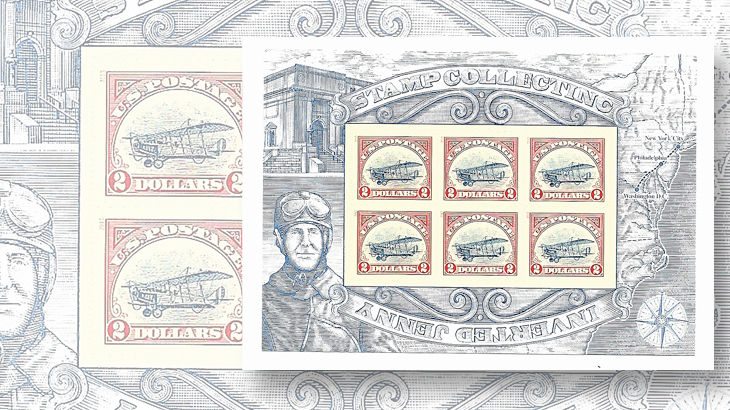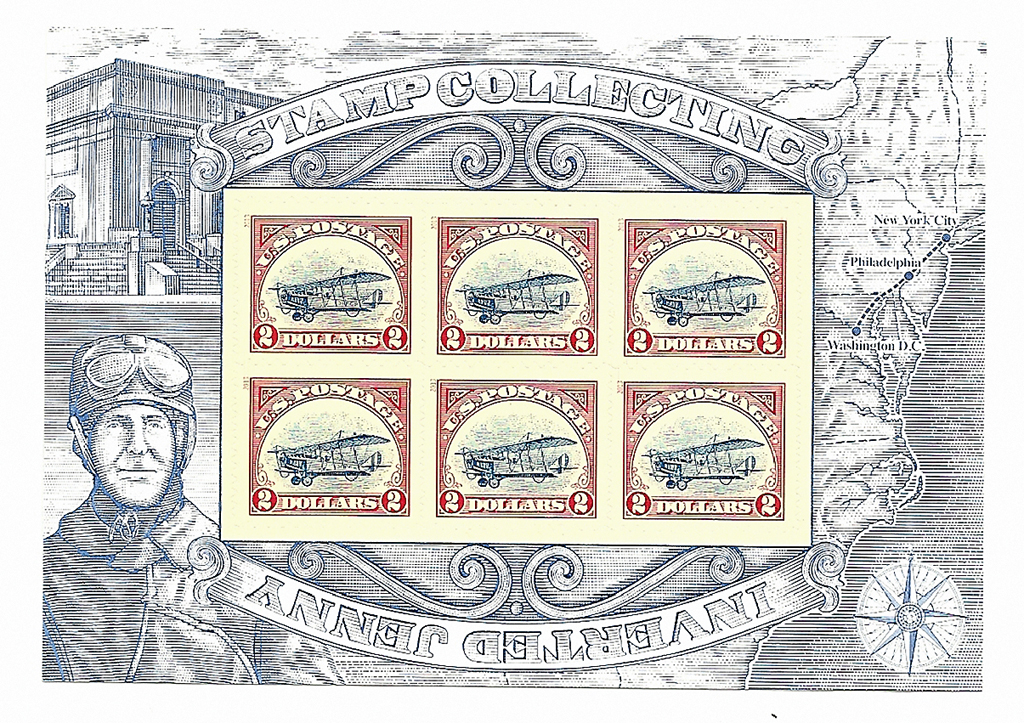Postal Updates
Postal Service IG criticizes creation, distribution of upright Jenny panes
By Bill McAllister
The inspector general of the United States Postal Service has sharply criticized the agency’s creation of the 100 panes of upright Jenny Invert stamps that were supposed to be randomly distributed along with the 2.2 million normal $2 Jenny Invert panes in 2013.
The report, issued July 15, said the creation of the 100 rarities violated a postal ban on the intentional creation of stamp rarities.
The Postal Service “strongly and inappropriately influenced the secondary [stamp] market by creating the rarity,” the report said.
Only 20 of the 100 upright panes have been registered as sold, the new report said.
Linn’s has reported the discovery of 24 of the 100 upright Jenny Invert panes.
The report noted that the agency’s “policy over philately is vague,” but it clearly states that postal employees “should refrain from intentionally creating philatelic rarities and does not include any exceptions, including the postmaster general’s authority to authorize these rarities.”
The next sentence in the report was blanked out on the copy of the report on the inspector general’s website, but the following sentence said that the agency’s board of governors, the postmaster general and general counsel “were aware of the creation of the limited number of un-inverted Jenny sheets.”
That printing was not announced in the agency’s Postal Bulletin as are all stamp issues, and the rarity distribution plan for the stamps was not approved by the agency’s legal department, the report said.
“The Postal Service’s goal was to sell all 2.2 million stamp sheets in the first 60 days for $26.4 million in revenue,” the report said.
But as of March 31, sales had raised only “about $13 million,” it said.
The report said that 1.2 million normal panes and 70 upright panes were given to postal retail units for sale “in the top 50 markets based on total stamp sales.” The report did not specifically name the top 50 markets.
The agency’s Stamp Fulfillment Services office in Kansas City, Mo., was given 700,000 normal panes and 30 upright panes, it said.
A total of 300,000 normal panes were placed in inventory for resupplying retail outlets, the report said.
At Kansas City, the 30 upright panes were “kept separately in a secure location with the stamp custodian.”
Of the 80 upright panes not registered with the USPS, 57 were sent to retail locations and 23 remain at Stamp Fulfillment Services.
But in Kansas City, officials “forgot” about their distribution plan for the rare upright panes, shipping only one pane between March 2014 and December 2014, the report said.
The plan apparently was to ship one of the rare panes a week, but in January 2015 that plan was suspended “due to legal constraints associated with distributing stamps free of charge.”
As a result, 23 upright panes remain in Kansas City where management has not decided what to do with the stamps, the report said.
“While this innovative idea was introduced to generate public interest and increase awareness of the Inverted Jenny stamp sheet,” the report said the creation of the upright pane was a mistake.
One upright Jenny Invert pane sold for $51,750 and another for $55,000 in 2014, the report noted.
By randomly giving away three of the rare upright panes to its customers through the Kansas City fulfillment center, the Postal Service “created an unfair advantage for customers who purchased stamps through venues other than retail post offices,” it said.
That action, along with a federal appeals court decision that USPS owes the artist of the Korean War Memorial sculpture $540,000, shows that the stamp program controls “need improvement,” the inspector general said.
It urged that the agency’s acting chief marketing and sales officer “develop a formal process for philatelic promotions” that includes the following provisions:
“A strategic plan that describes how promotions will be marketed, the legal authority behind promotions and transparency to the public to ensure fair access to promotions.”
“Formal approval of promotions and strategic plan from the key executive leadership team, including the general counsel.”
“Controls to prevent employees from designing and implementing unapproved ideas in relation to philatelic promotions.”
It also urged the USPS to “develop a plan to address the un-inverted Jenny stamps that remain in inventory (not purchased by customers) at both Stamp Fulfillment Services and retail units.”
The inspector general also said the section in the Postal Operations Manual on “the creation of philatelic rarities” should be revised.
Postal Service management “generally agreed” with the recommendations, the inspector general said.
As for what to do with the upright Jenny panes that remain unsold, “the Postal Service informed us at the exit conference that because all inverted and un-inverted stamp sheets were individually wrapped in sealed envelopes … it may not be cost effective to locate them.”
“In addition, once located, it may not be a good business practice to destroy them,” the report said.
Management does not plan to change its plan for the stamps remaining at retail units, the inspector general said.
“When management develops a plan to address the inventory at the Stamp Fulfillment Services, we believe they should also disclose the reasons for leaving the inventory at the retail units unchanged,” the report said.
A management response to the report indicated it hopes to implement the inventory changes by August. Other changes could be complete by as late as December, the report said.
Patrick Donahoe was the postmaster general who approved the 2013 Jenny Invert issue. He was not mentioned by name in the report.
At the time the stamps were printed, the stamp program was under the supervision of Nagisa Manabe, the chief marketing officer for the USPS. She resigned shortly after Donahoe retired.
MORE RELATED ARTICLES
Headlines
-
US Stamps
Oct 7, 2024, 3 PMMcMurtrie dismissed as APS education director following Sept. 21 arrest
-
US Stamps
Oct 7, 2024, 12 PMVasiliauskas named president of Mystic Stamp Co.
-
US Stamps
Oct 6, 2024, 5 PMApgar souvenir card available
-
US Stamps
Oct 6, 2024, 4 PMFirst Continental Congress and U.N. stamps receive Scott catalog numbers







